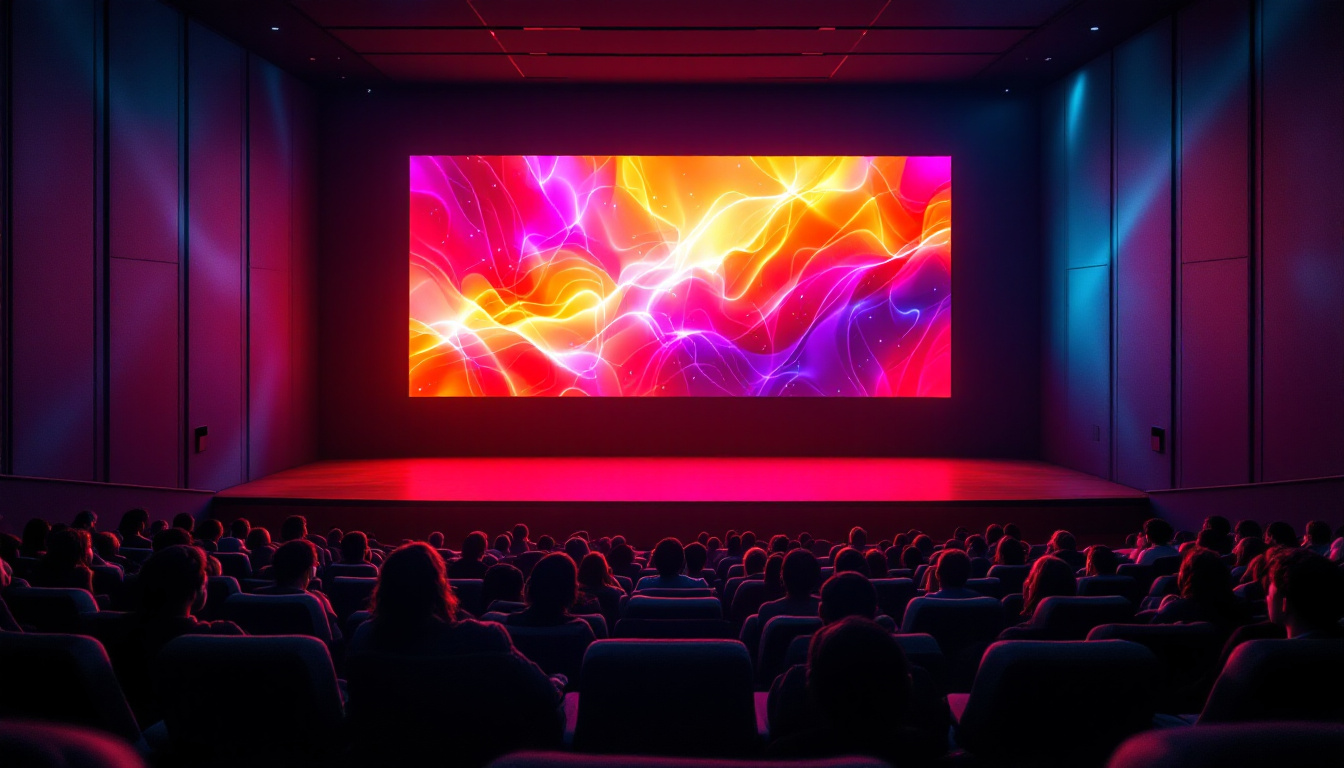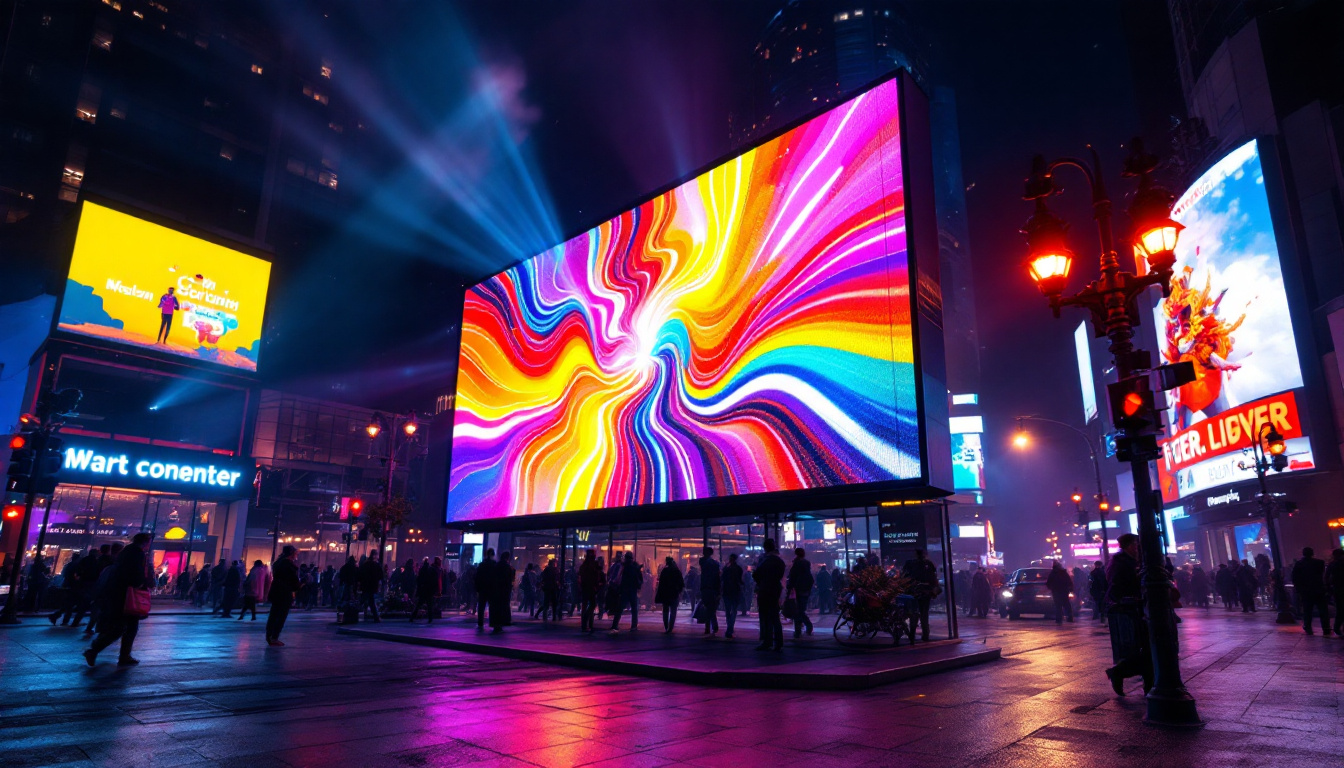What Is An LED LCD: LED Display Explained
In the world of modern technology, displays have become an integral part of our daily lives. From smartphones to televisions, the quality of the display can significantly influence user experience. One of the most popular types of display technology today is the LED LCD. This article aims to demystify what an LED LCD is, how it works, and why it has become a preferred choice for many consumers.
Understanding the Basics of LED LCD Technology
To fully appreciate LED LCD displays, it is essential to understand the components that make up this technology. At its core, an LED LCD is a type of liquid crystal display (LCD) that uses light-emitting diodes (LEDs) for backlighting. This combination results in brighter images, improved color accuracy, and enhanced energy efficiency.
The Role of Liquid Crystals
Liquid crystals are the heart of LCD technology. They are substances that exhibit properties between those of liquids and solid crystals. When an electric current passes through the liquid crystals, they align themselves in a way that either allows or blocks light. This manipulation of light creates the images we see on the screen.
In traditional LCDs, cold cathode fluorescent lamps (CCFLs) were used for backlighting. However, with the advent of LED technology, manufacturers have shifted towards using LEDs, which offer several advantages over CCFLs. The transition to LED backlighting not only improves the display’s energy efficiency but also allows for a more compact design, enabling manufacturers to create sleeker, lighter televisions and monitors.
How LED Backlighting Works
LED backlighting comes in two primary configurations: edge-lit and full-array. In edge-lit displays, LEDs are placed along the edges of the screen, and light is distributed across the display using a light guide panel. This design allows for thinner screens but can sometimes result in uneven brightness.
Full-array backlighting, on the other hand, involves placing LEDs directly behind the entire screen. This configuration allows for better control over brightness and contrast, leading to improved picture quality. Additionally, full-array displays often include local dimming features that enhance black levels and overall contrast. These features allow certain areas of the screen to dim while others remain bright, creating a more dynamic and immersive viewing experience that is particularly noticeable in dark scenes.
Moreover, advancements in LED technology have led to the development of quantum dot displays, which utilize tiny semiconductor particles to produce a wider color gamut and more vivid images. This innovation further enhances the capabilities of LED LCDs, making them a popular choice for both casual viewers and professional content creators who demand high fidelity in color reproduction. As the technology continues to evolve, we can expect even more improvements in display performance, energy efficiency, and overall user experience.
Advantages of LED LCD Displays
LED LCD displays have gained popularity for several reasons. Their advantages over traditional LCDs and other display technologies make them a compelling choice for consumers and businesses alike.
Improved Energy Efficiency
One of the most significant benefits of LED LCD displays is their energy efficiency. LEDs consume less power than traditional CCFLs, leading to lower energy bills and a reduced environmental impact. This efficiency is particularly appealing in large-scale applications, such as commercial displays and digital signage. Moreover, the energy savings can contribute to a company’s sustainability goals, making LED LCDs a preferred choice for eco-conscious businesses looking to minimize their carbon footprint.
Enhanced Picture Quality
LED LCDs are known for their superior picture quality. The use of LEDs provides brighter images with more vibrant colors. Furthermore, advancements in technology have led to features such as high dynamic range (HDR), which enhances contrast and color accuracy, making images appear more lifelike. This improvement in visual fidelity is especially beneficial for activities such as graphic design, video editing, and gaming, where precision in color representation is crucial. Additionally, many LED LCD displays now incorporate local dimming technology, which allows for deeper blacks and improved overall contrast, further elevating the viewing experience.
Longevity and Durability
LEDs have a longer lifespan compared to traditional backlighting methods. This longevity translates to less frequent replacements and lower maintenance costs. Additionally, LED LCDs are generally more durable, making them suitable for various environments, from homes to commercial settings. The robustness of these displays means they can withstand the rigors of daily use, including exposure to varying temperatures and humidity levels. This resilience not only extends the life of the display but also ensures consistent performance over time, making them a wise investment for both personal and professional applications. Furthermore, many manufacturers offer warranties that reflect the reliability of LED LCD technology, providing consumers with added peace of mind.
Comparing LED LCD to Other Display Technologies
While LED LCD displays are popular, they are not the only display technology available. Understanding how they compare to other technologies can help consumers make informed decisions.
LED LCD vs. OLED
Organic Light Emitting Diode (OLED) displays are often touted for their superior contrast and color reproduction. Unlike LED LCDs, which rely on a backlight, OLEDs produce their light, allowing for true blacks and a wider color gamut. However, OLEDs can be more expensive and may suffer from issues like burn-in, where static images can leave a permanent mark on the screen. Additionally, OLED technology tends to have a shorter lifespan compared to LED LCDs, particularly in terms of brightness degradation over time. This can be a crucial consideration for consumers who plan to use their displays for extended periods, such as in gaming or professional video editing.
Moreover, the manufacturing process for OLED displays can be more complex, leading to higher production costs. This complexity can also result in variability in quality across different brands and models. As a result, while OLEDs offer stunning visuals, potential buyers should weigh the benefits against the potential drawbacks, including price and longevity, before making a purchase.
LED LCD vs. Plasma
Plasma displays were once popular for their excellent color accuracy and wide viewing angles. However, they have largely fallen out of favor due to their higher power consumption and susceptibility to screen burn-in. LED LCDs have largely replaced plasma displays in the market, offering similar or better picture quality with improved energy efficiency. In fact, LED LCDs consume significantly less power, making them a more environmentally friendly option. This energy efficiency is particularly beneficial for consumers who use their displays for long hours, as it can lead to substantial savings on electricity bills over time.
Additionally, the advancements in LED technology, such as local dimming and quantum dot enhancements, have further bridged the gap in performance between LED LCDs and plasma displays. These innovations allow LED LCDs to achieve deeper blacks and more vibrant colors, making them a compelling choice for both casual viewers and home theater enthusiasts. Furthermore, the lightweight and slim design of LED LCDs makes them easier to mount and integrate into modern living spaces, offering versatility that plasma displays often lack.
Applications of LED LCD Technology
The versatility of LED LCD technology allows it to be utilized in various applications, ranging from consumer electronics to commercial displays.
Home Entertainment
In the realm of home entertainment, LED LCD televisions dominate the market. Their ability to deliver stunning visuals makes them ideal for watching movies, playing video games, and streaming content. With features such as smart capabilities and 4K resolution, these TVs cater to the modern viewer’s demands.
Commercial Displays
LED LCD technology is also widely used in commercial settings. Digital signage, information displays, and advertising screens benefit from the bright, vibrant images produced by LED LCDs. Their energy efficiency and low maintenance requirements make them a practical choice for businesses looking to engage customers and convey information effectively.
Mobile Devices
Smartphones and tablets often utilize LED LCD technology due to its compact size and energy efficiency. The high resolution and color accuracy of LED LCDs enhance the user experience, making them suitable for everything from browsing the web to watching videos.
Future Trends in LED LCD Technology
As technology continues to evolve, so too does LED LCD technology. Several trends are shaping the future of this display type, promising even better performance and user experience.
Advancements in Display Resolution
The demand for higher resolution displays is on the rise, with 8K resolution beginning to enter the market. LED LCDs are adapting to this trend, with manufacturers developing screens that support higher pixel densities. This evolution will provide even sharper images and more detailed visuals for consumers.
Integration with Smart Technology
Smart TVs are becoming increasingly popular, and LED LCD displays are at the forefront of this trend. With built-in streaming services, voice control, and connectivity options, these displays are evolving to meet the needs of the modern consumer. The integration of artificial intelligence and machine learning is also expected to enhance user experience by personalizing content recommendations.
Environmental Considerations
As sustainability becomes a more pressing issue, manufacturers are focusing on creating eco-friendly LED LCD displays. This includes using recyclable materials, reducing energy consumption, and implementing sustainable production practices. Such initiatives will not only benefit the environment but also appeal to environmentally conscious consumers.
Conclusion
LED LCD technology has revolutionized the way we experience visual media. Its combination of liquid crystal displays and LED backlighting offers numerous advantages, including improved energy efficiency, enhanced picture quality, and greater durability. As technology continues to advance, LED LCD displays will likely remain a popular choice for consumers and businesses alike.
Understanding the nuances of LED LCD technology empowers consumers to make informed decisions when purchasing displays. Whether for home entertainment, commercial use, or mobile devices, LED LCDs are poised to play a crucial role in the future of visual technology.
In conclusion, as the demand for high-quality displays continues to grow, LED LCD technology will undoubtedly evolve, offering even more impressive features and capabilities. Keeping an eye on these advancements will ensure that consumers can take full advantage of the benefits that LED LCD displays have to offer.
Explore Cutting-Edge LED Displays with LumenMatrix
Ready to elevate your visual experience with the latest in LED display technology? LumenMatrix is at the forefront of innovation, offering a wide array of LED display solutions tailored to your needs. From captivating Indoor and Outdoor LED Wall Displays to dynamic Vehicle and Sports LED Displays, and even customizable options like Floor and Custom LED Displays, LumenMatrix has the perfect solution to enhance your brand’s visibility and audience engagement. Embrace the future of visual communication with our All-in-One and LED Transparent Displays. Check out LumenMatrix LED Display Solutions today and transform your space with unparalleled clarity and impact.































